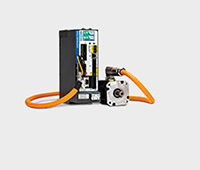By Paul J. Heney/Editorial Director
Electric motors comprise a vast and growing portion of the industrial market. According to the 2013 Low Voltage Motors report from the Motors & Mechanical Power Transmission group, global revenue for low-voltage motors used in industrial applications is set to rise to $23.4 billion by 2017, up from $14.6 billion in 2012. However, the product mix is expected to change greatly during this period in terms of efficiency class, due to various Minimum Efficiency Performance Standards being enacted by governments around the world.
In 2012, high-efficiency motors accounted for only 28% of global low-voltage motor ship-ments, with most of the rest being standard efficiency motors. By 2017, the higher efficiency motor types will grow to 62% of shipments.
But a lack of communication—and a short-sighted fixation on holding down factory capital expenditures—is incurring massive energy-inefficiency costs for manufacturers during the lifetimes of their production facilities, according to researchers at IHS Technology.

Global Forecast of Low Voltage Motor Shipments by Level of Efficiency (in Unit Shipments) – Efficiency Class Transition: 2012 v. 2017
“There is a significant disconnect between those who make decisions regarding industrial capital expenditures, and those who are tasked with managing the costs of manufacturing operations,” said Alex Chausovsky, manager and principal analyst, Motor-Driven Systems and Industrial Automation, at IHS. “Individuals making capital-expenditure decisions when building new industrial facilities rarely, if ever, consider the long-term costs associated with projects. As a result, these decision makers consistently place initial purchase price concerns ahead of total cost-of-ownership (TCO) considerations. This means that energy efficiency is not a factor in the decision-making process, and operators that take over these projects after their completion are often faced with much larger energy bills than they would have if the most efficient equipment had been specified during the construction phase of the project.”
For factory operators, these energy bills can add up over the years. The purchase price of an average electric motor represents only 2% of its lifetime costs. A full 96% of the motor’s TCO is accounted for by its lifetime electricity usage—with the remaining 2% going toward repair and maintenance.
The International Energy Agency says that electric motors used in industrial facilities and other settings consume nearly half of the world’s electricity. And with industry representing the largest single electricity-consuming market —42% of total usage in 2006—the stakes are enormous.
“In general, improvements in industrial energy efficiency (IEE) can increase productivity, allowing companies and countries to compete more effectively in the global marketplace,” Chausovsky said. “IEE represents the low-hanging fruit in total energy efficiency gains, with minimal implementation barriers that can be overcome while remaining fiscally responsible. Capital investment in IEE can often be recouped in short periods of time, often less than 24 months.”
IHS Technology
www.ihs.com
Filed Under: Automotive, MOTION CONTROL





Tell Us What You Think!